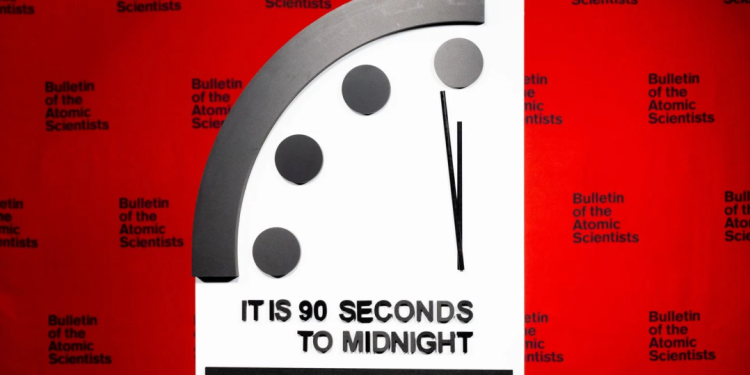The Doomsday Clock is an internationally known indicator of the world’s susceptibility to global disasters induced by human technologies.
The world is close to a global catastrophe as the hands of the Doomsday Clock now stand at 90 seconds to midnight according to information by the Science and Security Board of the Bulletin of the Atomic Scientists.
The Doomsday Clock, developed in 1945, has become an internationally known indicator of the world’s susceptibility to global disasters induced by human technologies.
According to the report, the ongoing war between Russia and Ukraine is headed into its second year.
Although this is not the exclusive reason for the threats, both sides’ determination to earn a sweeping win increases the risks of further escalation.
The war also continues to raise questions about how countries interact given the eroding of norms of international conduct that underpin successful responses to a variety of global risks.
The security arrangements in Europe that have largely held since the end of World War II are being reviewed, and most terrifyingly, Russia’s oblique threats to use nuclear weapons serve as a stark reminder to everyone that the risk of escalation in the conflict, whether by accident, design, or error, is extremely high.
The chance that the confrontation will escalate beyond anyone’s ability to control is also very high.
Geopolitical observers worry that New START, the only remaining nuclear weapons deal between Russia and the United States, is in danger as the war continues with the United States indirect involvement.
The pact is set to expire in February 2026, unless the two sides pick up their discussions and discover a foundation for further reductions.
Mutual inspections would be stopped, mistrust would increase, a nuclear weapons race would start, and the likelihood of a nuclear exchange would increase.
UN Secretary-General, Antonio Guterres, warned last August that the world has entered “a time of nuclear danger not seen since the height of the Cold War.”







